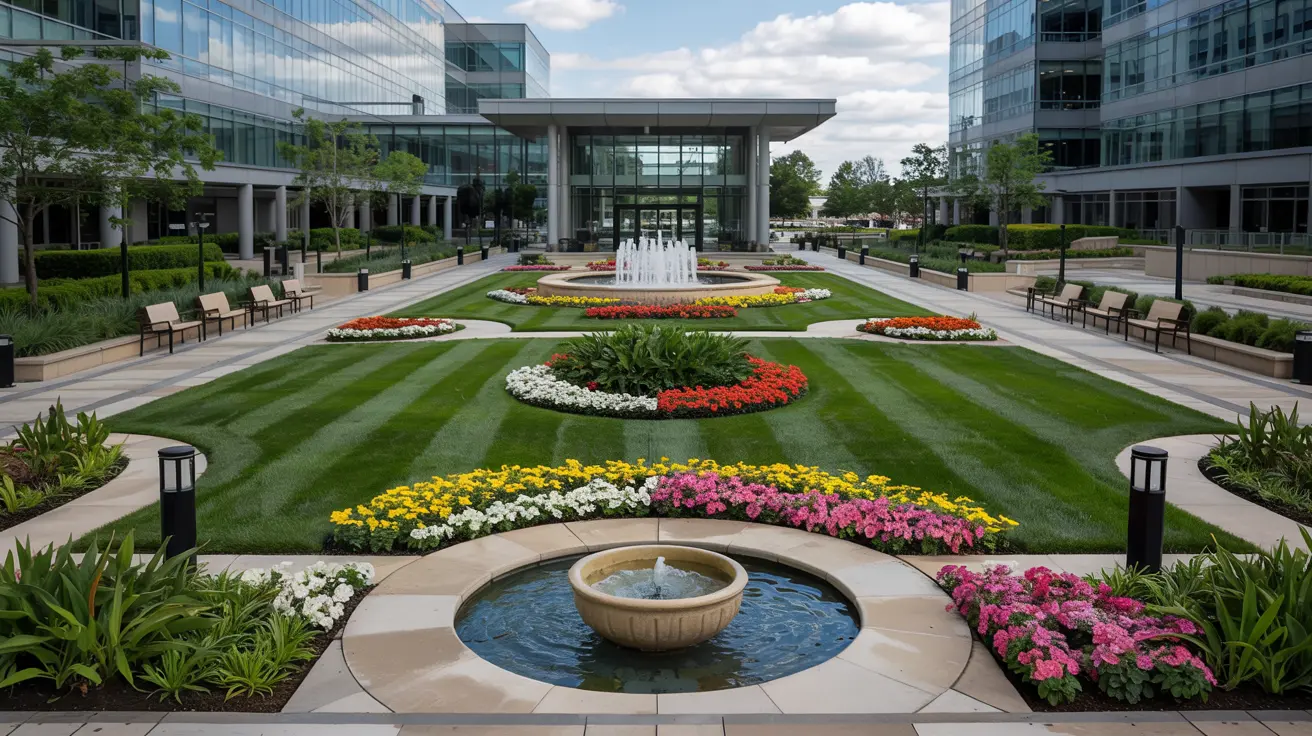
Drought-Resistant Plants
Published on April 15, 2025 by Darryl Chevis
Gardening Through Dry Spells: A Guide to Drought-Resistant Plants
Are you tired of watching your plants wilt during hot, dry weather? Drought-resistant plants offer a beautiful solution that can transform your gardening experience while conserving water. As climate change brings more unpredictable weather patterns and water restrictions become common in many regions, these resilient plants have become valuable allies for gardeners everywhere. Whether you're dealing with occasional dry spells or living in an arid climate, understanding these hardy plants can revolutionize your approach to landscaping.What Are These Water-Wise Wonders?
Drought-resistant plants have evolved clever adaptations to handle periods with little rainfall. They're not "no-water" plants (a common misconception), but they need significantly less once established. It's helpful to distinguish between:- Drought-resistant plants that can handle dry spells once they've settled in
- Drought-tolerant plants that can survive extended periods without water
- Xeriscaping, which is a comprehensive approach to landscaping focused on water conservation through smart design choices, appropriate plant selection, and efficient irrigation
Why Make the Switch?
The benefits of drought-resistant gardening extend far beyond just saving water: Conservation and Cost Savings: Water bills typically drop significantly after the first season. In regions facing water shortages or restrictions, these gardens allow you to maintain beautiful landscaping while respecting conservation efforts. Many municipalities now offer rebates for converting traditional lawns to water-wise landscapes. Less Maintenance, More Enjoyment: The reduced maintenance is equally valuable – less time watering, mowing, and fertilizing means more time actually enjoying your garden! Many drought-resistant plants also require less pruning and pest management than their thirstier counterparts. Surprising Beauty and Diversity: Many gardeners are surprised by the incredible variety available. Far from being limited to dull, spiky plants, drought-resistant gardens can burst with color and texture year-round. From vibrant flowering perennials to architectural succulents and graceful ornamental grasses, these plants offer endless design possibilities. Environmental Benefits: Native drought-resistant plants also attract butterflies, bees, birds, and beneficial insects, enhancing local biodiversity. They typically require fewer chemical inputs, reducing runoff into local waterways. Their extensive root systems can also help prevent soil erosion. Resilience Through Changing Seasons: During extended dry spells, these resilient gardens maintain their appeal while traditional landscapes may struggle. Well-established drought-resistant gardens bounce back quickly after drought periods and can better withstand the extremes of both dry and wet seasons.Nature's Clever Survival Strategies
These plants employ fascinating adaptations to cope with dryness—understanding these strategies helps us appreciate their unique beauty: Root Systems: Some plants send roots deep into the soil to find hidden moisture, while others develop extensive shallow root systems to quickly absorb rain or dew. Plants like butterfly weed (Asclepias tuberosa) develop taproots that can extend several feet down, accessing water sources unavailable to shallow-rooted plants. Water Storage: Succulents store water in their plump leaves like living water bottles. This adaptation is most obvious in plants like aloe and agave, but many other drought-resistant plants have thickened leaves or stems that serve as water reservoirs. Modified Leaves: The silvery, fuzzy leaves found on many drought-resistant plants reflect sunlight and hold moisture near the leaf surface – nature's own air conditioning system! Plants like Russian sage (Perovskia) and lamb's ear (Stachys byzantina) showcase this adaptation beautifully. Other plants reduce leaf size or develop waxy coatings to minimize water loss. Seasonal Dormancy: Many plants simply go dormant during extreme heat or drought, conserving energy until better conditions return, then spring back to life when temperatures drop or rains arrive. California poppies and many spring-blooming bulbs demonstrate this strategy, disappearing during summer's heat only to return when conditions improve. Resin Production: Some plants, particularly those from Mediterranean climates, produce aromatic resins that reduce water loss and deter herbivores. Rosemary, lavender, and many salvias employ this strategy, which explains their distinctive fragrances.Garden Favorites for Dry Conditions
Consider these reliable performers for your drought-resistant garden:For Sunny Spots:
Mediterranean Herbs- Lavender brings gorgeous purple blooms and heavenly scent that bees adore
- Thyme creates aromatic groundcovers in various forms, from creeping varieties to small shrubs
- Sage offers culinary value and beautiful gray-green foliage, with some varieties producing striking blue or purple flowers
- Yarrow's flat-topped flower clusters in sunny yellows and reds keep blooming even in the hottest weeks
- Coneflowers (Echinacea) provide long-lasting summer blooms that attract butterflies and birds
- Black-eyed Susans (Rudbeckia) offer cheerful yellow flowers through summer and into fall
- Agastache (hyssop) brings vertical interest with spikes of tubular flowers that hummingbirds can't resist
- Pink muhly grass creates magical cloud-like plumes in fall that catch the evening light
- Little bluestem provides year-round interest with blue-green summer foliage that turns copper-orange in fall
- Feather reed grass (Calamagrostis) offers architectural vertical interest and thrives in various conditions
- Butterfly bush (Buddleia) attracts pollinators with fragrant flower panicles from summer to fall
- Yucca provides dramatic architectural elements with sword-like leaves and impressive flower stalks
- Smoketree (Cotinus) offers unique puffy purple or pink flower clusters that resemble smoke
For Containers and Small Spaces:
Succulents and Cacti- "Hens and Chicks" (Sempervivum) create fascinating geometric patterns and readily produce offspring
- Sedum varieties range from groundcovers to upright forms with colorful foliage and late-season blooms
- Echeverias form elegant rosettes in blue-green, purple, and even pink tones
- Agave provides dramatic structure but choose smaller varieties for containers
- Rosemary does double-duty as both ornamental and culinary herb
- Santolina (cotton lavender) creates neat, rounded forms with silvery foliage
- Compact sages like 'Hot Lips' provide months of colorful blooms in minimal space
For Shade:
- Native columbines bring delicate beauty to drier shaded spots
- Heuchera (coral bells) offers colorful foliage ranging from silver to purple to caramel
- Oregon grape (Mahonia) provides evergreen structure and yellow flowers in early spring
- Epimedium creates delicate groundcover with heart-shaped leaves and dainty flowers
Native Options:
Plants native to your region are often the best choices as they're already adapted to local rainfall patterns. Consider: Northeast: Butterfly weed, black-eyed Susan, purple coneflower, little bluestem Southeast: Georgia savory, yucca, aromatic aster, gulf muhly grass Midwest: Prairie dropseed, blazing star, pale purple coneflower, prairie smoke Southwest: Desert marigold, penstemon, Apache plume, desert spoon West Coast: Manzanita, California fuchsia, ceanothus, buckwheat Local nurseries, extension offices, and native plant societies can be invaluable resources for finding the perfect plants for your specific location.Designing Your Drought-Resistant Landscape
Creating a cohesive and beautiful drought-resistant garden requires thoughtful planning: Zoning for Efficiency: Group plants with similar water needs together. Create "hydrozones" where plants with higher water requirements are placed near the home or in naturally moister areas, while the most drought-tolerant species go in outlying areas. Consider Microclimates: Identify the hottest, driest areas of your property (south-facing slopes, areas near heat-reflecting surfaces) and the cooler, shadier spots. Match plants to these conditions for maximum success. Incorporate Hardscaping: Patios, pathways, rock gardens, and dry creek beds reduce the planted area while adding structure and visual interest. These features can capture rainwater and direct it to planted areas, making the most of natural precipitation. Create Year-Round Interest: Select plants with different bloom times, interesting seed heads, colorful fall foliage, or winter structure to ensure your garden remains appealing through all seasons. Start Small: Convert one section of your yard first, learn from the experience, and gradually expand your drought-resistant areas as you gain confidence and knowledge.Tips for Success
Proper establishment makes all the difference between merely surviving and truly thriving: Soil Preparation: Prepare the soil well before planting, adding compost to improve structure and drainage. Most drought-resistant plants hate sitting in wet soil! For extremely compacted soils, consider raised beds or mounding soil to improve drainage. Proper Planting Time: Fall and spring are typically ideal for establishing drought-resistant plants, allowing root systems to develop before extreme temperatures arrive. In mild-winter areas, fall planting gives plants the longest time to establish before summer heat. Establishment Watering: New plants need regular watering their first season to develop strong roots. Water deeply but infrequently to encourage roots to grow downward rather than remaining near the surface. A moisture meter can help avoid both over-watering and under-watering during this critical period. Mulching for Moisture: A thick layer of mulch around plants (keeping it away from stems) significantly reduces watering needs by preventing soil moisture from evaporating. Organic mulches like wood chips or shredded bark gradually break down to improve soil quality, while inorganic mulches like gravel provide long-lasting protection in the hottest climates. Minimal Fertilizer: Most drought-resistant plants have evolved to thrive in lean soil conditions. Over-fertilizing promotes lush growth that requires more water and can reduce flowering. If fertilizer is needed, choose slow-release organic options applied at half the recommended rate. Strategic Pruning: Resist the urge to prune too early in spring, as many drought-resistant plants benefit from keeping their winter structure until new growth emerges. Dead-heading spent flowers can extend blooming periods, but leave some seed heads for winter interest and wildlife food. Ongoing Monitoring: While drought-tough gardens need much less attention, it's important to watch for signs of extreme stress during prolonged dry spells. Even the toughest plants sometimes need supplemental water during exceptional conditions, particularly in their first few years.Embracing a New Gardening Philosophy
Creating a water-wise garden connects us more deeply to our local environments and changes how we think about beauty in the landscape. Instead of fighting against natural conditions, we learn to appreciate the unique aesthetic of plants that have evolved to thrive in challenging environments. This shift in perspective often extends beyond gardening—many who embrace drought-resistant landscaping find themselves more attuned to natural rhythms, more observant of seasonal changes, and more appreciative of subtle beauty in all its forms. Working with nature rather than against it ultimately benefits your water bill, free time, and local ecosystem. As you watch your drought-resistant garden flourish through dry periods while attracting wildlife and requiring minimal intervention, you'll wonder why you didn't make the switch sooner! Whether you're replacing a thirsty lawn, designing a new landscape, or simply adding a few water-wise plants to your existing garden, embracing drought-resistant plants opens the door to a more sustainable and satisfying gardening experience.Categories: Plant Selection



